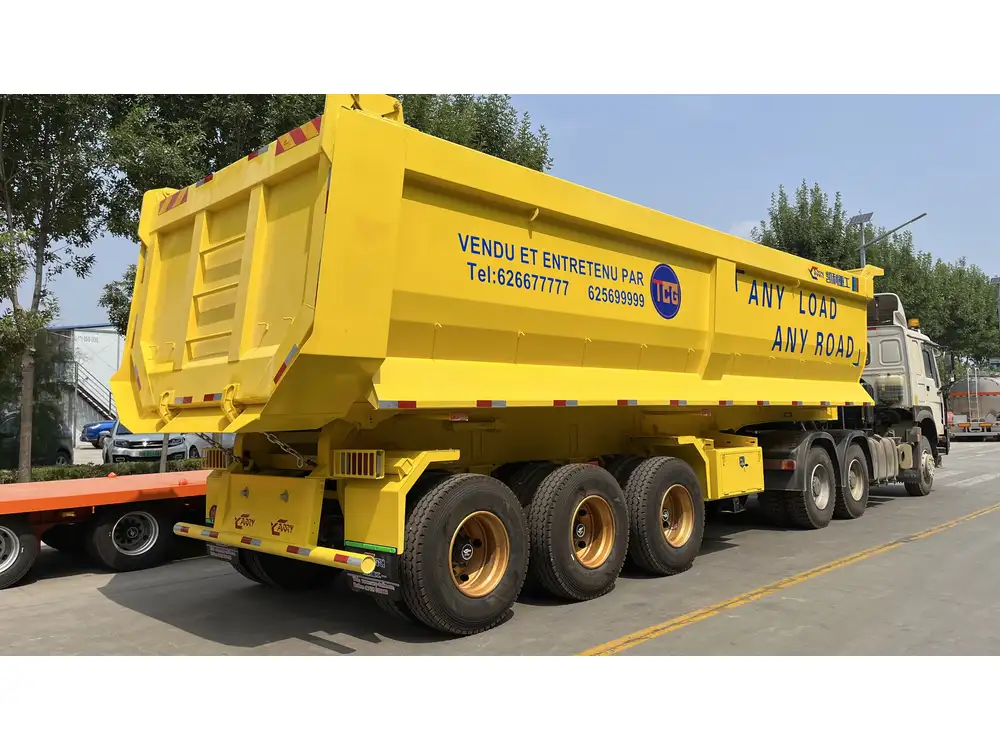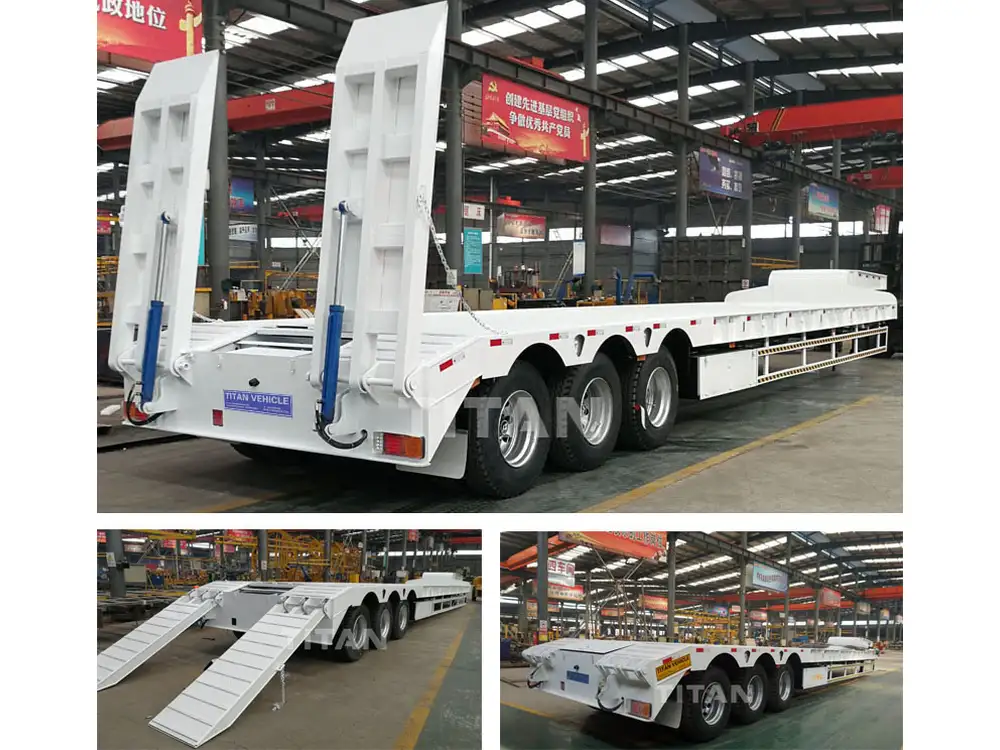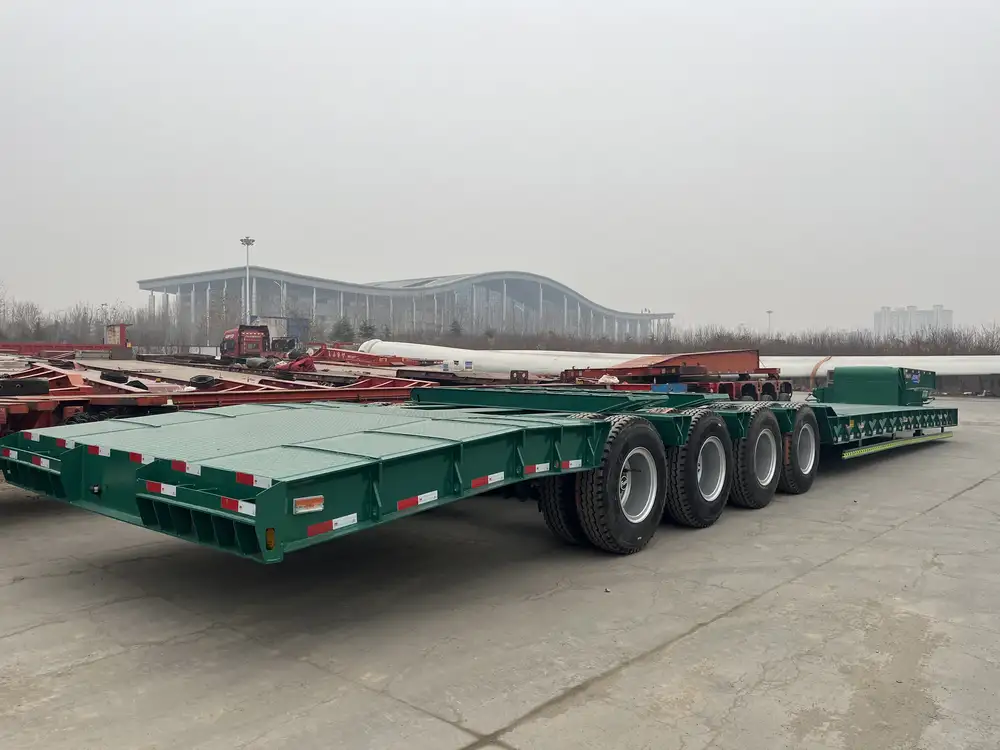When it comes to constructing dump trailers, one of the critical components to consider is the sides. Properly designed and built sides not only enhance the trailer’s functionality but also optimize its durability and safety during operation. In this article, we will delve deep into the intricacies of making dump trailer sides, exploring materials, design considerations, construction techniques, and best practices to ensure that your dump trailer is both efficient and resilient.
Understanding the Components of Dump Trailer Sides
Dump trailer sides can vary dramatically in terms of design, material, and functionality. Before diving into the actual construction, it is essential to understand the fundamental components involved:
| Component | Description |
|---|---|
| Side Panels | Vertical structures that make up the sides of the trailer, holding materials in place. |
| Top Rail | The horizontal structure that sits atop the side panels, providing support and stability. |
| Hinges | Mechanisms that allow the side panels to be raised or opened for unloading. |
| Latches | Devices used to secure the sides during transportation. |
| Frame Support | Structural components that help support the entire side structure. |
Understanding these components will set the foundation for efficiently building robust and functional dump trailer sides.
Materials Selection for Optimal Performance
The choice of materials is paramount when constructing dump trailer sides. Each material varies in terms of weight, cost, and durability. Here’s a detailed overview of the popular materials used:

Steel
- Pros:
- High strength-to-weight ratio.
- Durable and can withstand significant loads.
- Easily welded and fabricated.
- Cons:
- Susceptible to rust if not treated or painted.
- Heavier than other materials, affecting overall trailer weight.
Aluminum
- Pros:
- Lightweight, enhancing fuel efficiency.
- Naturally resistant to corrosion.
- Requires less maintenance than steel.
- Cons:
- May be more expensive than steel.
- Not as strong as steel, leading to potential bending under heavy loads.
Composite Materials
- Pros:
- Corrosion-resistant and lightweight.
- Can be designed to provide high rigidity without excessive weight.
- Cons:
- Often more costly than traditional materials.
- Requires specialized manufacturing procedures.

Comparison of Materials
| Material | Weight | Durability | Cost | Maintenance |
|---|---|---|---|---|
| Steel | Heavy | High | Moderate | Requires regular maintenance |
| Aluminum | Light | Moderate | High | Low maintenance |
| Composite | Light | High | High | Low maintenance, specialized |
Design Considerations for Dump Trailer Sides
When designing dump trailer sides, several critical factors should guide your approach:
Height and Angles
- Height: Standard side height ranges between 24″ to 36″, depending on the intended load capacity. Higher sides can transport larger loads but may require additional structural support.
- Angle of Sides: An angle can help facilitate material discharge during unloading. A slight flare can improve stability while maintaining load accessibility.

Reinforcement
- Reinforcing the sides with cross bracing or additional support beams can significantly enhance the structural integrity, particularly for heavy-duty trailers designed for transporting construction materials.
Accessibility Features
- Incorporating gates or openings in the trailer sides aids in quick unloading and user convenience. Consider the placement of these features to maintain structural strength.
Step-by-Step Guide: Building Dump Trailer Sides
Now that we’ve covered the essential components and design considerations, let’s walk through the step-by-step process of constructing dump trailer sides.

Step 1: Gather Required Tools and Materials
Before commencing construction, ensure you have the following tools and materials at hand:
- Materials: Steel/aluminum sheets, hinge assemblies, latches, top rail sections.
- Tools: Welding machine, cutting torch, drill, safety equipment, measuring tape, level, and grinder.
Step 2: Measurement and Cutting
- Measure: Precisely measure the trailer dimensions using a measuring tape. Account for the height, width, and angle needed for the sides.
- Cut: Using your cutting torch or metal shears, cut the side panels to your specified dimensions. Ensure cuts are clean for a perfect fit during welding.
Step 3: Frame Construction
- Weld the Frame: Begin by constructing the frame that will support the sides. Use the measured lengths of top rails and bottom rails, welding them together to create a rectangular frame.
- Add Support Beams: For added stability, weld several support beams within the frame structure, spaced evenly throughout the length of the trailer.

Step 4: Attaching the Side Panels
- Position Panels: Align the cut side panels with the frame. It’s best to have someone assist you during this step for accurate alignment.
- Weld Panels: Once in position, begin welding the side panels to the frame. Start with the bottom edge and work your way up to ensure proper adhesion. Ensure that welds are consistent and strong.
Step 5: Install Hinges and Latches
- Hinge Installation: Attach heavy-duty hinges to the desired side panel for easy operation. The hinges should be placed at the front or rear, depending on the design.
- Latch Installation: Securely install latches at the top or bottom, ensuring that sides can be locked during transit.
Step 6: Finishing Touches
- Grind and Sand: Use a grinder to clean up any rough edges around the welds. This not only enhances appearance but also prevents potential injuries.
- Paint/Coating: Apply a rust-resistant paint or coating on the exterior to protect against weather elements. This is crucial for steel sides particularly.

Maintenance Tips for Dump Trailer Sides
After construction, maintaining the integrity of your dump trailer sides is essential for longevity and performance. Here are some tips to keep your trailer in prime condition:
- Regular Inspections: Periodically check for signs of rust, cracks, or fatigue in the welds.
- Cleaning: Frequently clean the side panels to remove debris, which can cause scratches or corrosion over time.
- Paint touch-ups: If you notice any chipped areas in the protective paint, touch them up promptly to prevent rust formation.
Troubleshooting Common Issues
While building and maintaining dump trailer sides, you may encounter several challenges. Here’s a quick troubleshooting guide:
| Issue | Possible Causes | Solutions |
|---|---|---|
| Weak/Wobbly Sides | Poor welding or inadequate structural support | Reinforce with additional bracing or welds |
| Rust Formation | Lack of protective coating | Apply rust-resistant paint as needed |
| Misalignment of Panels | Improper measurements during cutting | Recheck measurements and adjust as needed |
| Difficulty in Raising Sides | Improper hinge installation/placement | Reassess hinge placement and functionality |
Conclusion
Building dump trailer sides requires meticulous planning, careful material selection, and precision craftsmanship. By adhering to the steps outlined, you can create secure and efficient trailer sides that are not only functional but also durable. Whether your focus is on cost-effectiveness or achieving superior strength, understanding each element of the buildup process will aid you significantly.
Incorporate these practices to ensure your dump trailer remains an asset to your operations, capable of withstanding the rigors of daily use. Whether you are a manufacturer or a DIY enthusiast, having the right approach and knowledge at your disposal is vital to your success in constructing robust dump trailer sides.



